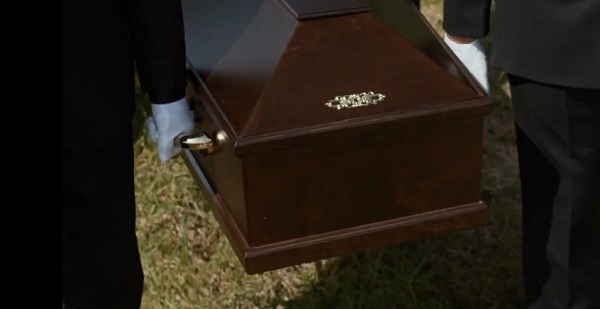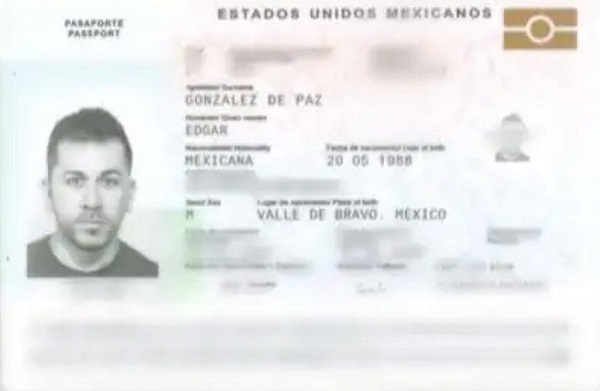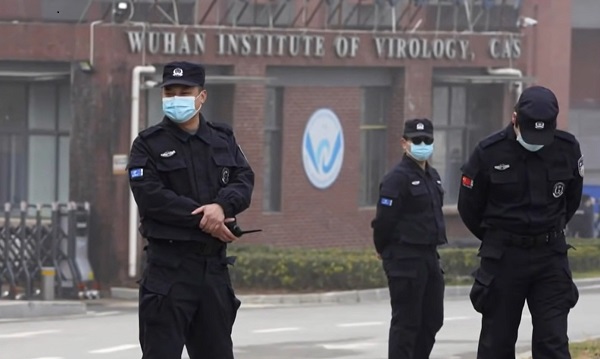National
‘Insider’ connected to ArriveCAN app to testify before House of Commons committee

From LifeSiteNews
The once-mandatory ArriveCAN app cost taxpayers over $50 million, $8.9 million of which was given to an obscure company called GC Strategies which was operated by a two-man team out of an Ontario home.
Canadian MPs investigating the federal government’s $54 million controversial COVID-era ArriveCAN travel app are today questioning an “insider” connected to the app who was claimed to have boasted he “rubbed shoulders” with every assistant “deputy minister in town.”
According to Blacklock’s Reporter, the “insider” to testify before the House of Commons Standing Committee on Government Operations and Estimates (OGGO) as to his involvement with the travel app is consultant Vaughn Brennan, who was reluctantly named as a witness.
According to subcontractors involved in the ArriveCAN app, Brennan had been named as a “self-styled political insider.”
According to witnesses, Brennan said he had “rubbed shoulders with every assistant deputy minister in town” and thought that the $23 million being spent on a sole-sourced contract was “a drop in the bucket.”
To date, Brennan has never spoken publicly about his involvement with the ArriveCAN app, however, it has been confirmed he did work with ArriveCAN consultant GC Strategies Incorporated.
The once-mandatory ArriveCAN app cost taxpayers over $50 million, $8.9 million of which was given to an obscure company called GC Strategies which was operated by a two-man team out of an Ontario home.
The OGGO is investigating how various companies such as Dalian, Coaradix, and GC Strategies received millions in taxpayer dollars to develop the contentious quarantine-tracking ArriveCAN app.
LifeSiteNews last year reported how two tech entrepreneurs testified before the committee that during the development of the ArriveCAN travel app they saw firsthand how federal managers engaged in “extortion,” “corruption,” and “ghost contracting,” all at the expense of taxpayers.
Canada’s Auditor General Karen Hogan announced an investigation of the ArriveCAN app in November of 2022, after the House of Commons voted 173-149 for a full audit of the controversial app.
The OGGO has not yet determined who gave the final approval over the ArriveCAN travel app’s contracts, which paid out millions to consultants.
‘Systemic corruption’ within Trudeau federal government ‘evident to everyone,’ says Conservative MP
Conservative Party of Canada (CPC) MP Stephanie Kusie noted to the committee on October 26, 2023, that it should be “evident to everyone in this room as well as Canadians,” that there is “systemic corruption within this government,” when speaking about ArriveCAN. She added that government corruption “should be absolutely evident.”
According to CPC MP Kelly McCauley, who is chair of the committee, Brennan had declined to testify before it, adding that “GC Strategies is playing hard to get.”
“That would be a polite way of saying it,” said McCauley.
“We have not been able to get a commitment from them despite our clerk going above and beyond in trying to accommodate them. We’re having difficulties with them.”
MPs on the OGGO, without any explanation, were told that a GC Strategies executive “routinely boasted he and his friends, senior government officials with contracting authority, have ‘dirt on each other.’”
Since 2022, GC Strategies has received some $44 million in federal contracts.
Last year LifeSiteNews reported on how during a parliamentary investigation into the misuse of funds used to create the ArriveCAN travel app, Canada’s chief federal technology officer was threatened with contempt of Parliament charges for refusing to give clear answers to questions from MPs regarding his involvement with the much-maligned app.
ArriveCAN was introduced in April 2020 by the Liberal government of Prime Minister Justin Trudeau and made mandatory in November 2020. The app was used by the federal government to track the COVID jab status of those entering the country and enforce quarantines when deemed necessary.
When the app was mandated, all travelers entering Canada had to use it to submit their travel and contact information as well as any COVID vaccination details before crossing the border or boarding a flight.
In October 2021, Trudeau announced unprecedented COVID-19 jab mandates for all federal workers and those in the transportation sector and said the unjabbed will no longer be able to travel by air, boat, or train, both domestically and internationally.
This policy resulted in thousands losing their jobs or being placed on leave for non-compliance.
Trudeau “suspended” the COVID travel vaccine mandates on June 20, 2022. Last October, the Canadian federal government ended all remaining COVID mandates in Canada regarding travel, including masking on planes and trains, COVID testing, and allowing vaccine-free Canadians to no longer be subject to mandatory quarantine.
Over 700 vaccine-free Canadians negatively affected by federal COVID jab dictates have banded together to file a multimillion-dollar class-action lawsuit against the federal government of Prime Minister Justin Trudeau.
armed forces
Canadian veteran says she knows at least 20 service members who were offered euthanasia

From LifeSiteNews
Canadian Armed Forces veteran Kelsi Sheren told members of the House of Commons that he has proof of veterans being offered assisted suicide.
Canada’s liberal euthanasia laws have made the practice so commonplace that a Canadian Armed Forces (CAF) veteran has said she knows and has “proof” that no less than 20 of her colleagues were offered unsolicited state-sponsored euthanasia.
Kelsi Sheren, who is a CAF veteran, recently told MPs in the House of Commons veterans affairs committee that “over 20 veterans have confirmed being offered MAID.”
“I have the proof, and I have proof of more,” Sheren told the committee during an October 28 meeting.
Conservative MP Blake Richards asked Sheren if she was willing to provide them with evidence to affirm her allegations.
Sheren noted how the 20 veterans have given written testimonies, or actual audio recordings, of when they were offered what in Canada is known as Medical Assistance in Dying (MAiD).
“We also have other individuals who are too afraid to come forward because Veterans Affairs has threatened their benefits,” she told MPs, adding that some other veterans were even offered non-disclosure agreements along with “payouts if they were to take it.”
Veterans Affairs Canada (VAC) has told the media its “employees have no role or mandate to recommend or raise (MAid). ”
As reported by LifeSiteNews, this is not the first time reports of CAF veterans saying they were offered MAiD.
Indeed, as reported by LifeSiteNews, it was revealed last year that the federal department in charge of helping Canadian veterans appears to have purposefully prevented the existence of a paper after scandalous reports surfaced alleging that caseworkers had recommended euthanasia to suffering service members.
LifeSiteNews recently published a report noting how a Canadian combat veteran and artillery gunner revealed, while speaking on a podcast with Dr. Jordan Peterson, that the drugs used in MAiD essentially waterboard a person to death. Assisted suicide was legalized by the Liberal government of former Prime Minister Justin Trudeau in 2016.
A new EPC report has revealed that Canada has euthanized 90,000 people since 2016.
As reported by LifeSiteNews last week, a Conservative MP’s private member’s bill that, if passed, would ban euthanasia for people with mental illness received the full support of the Euthanasia Prevention Coalition (EPC).
National
Conservative bill would increase penalties for attacks on places of worship in Canada

From LifeSiteNews
Conservative MP Kelly Block has introduced Bill C-255 to amend the Criminal Code with minimum penalties for vandalizing religious property amid hundreds of church burnings.
Conservatives are working to increase penalties for mischief directed at places of worship after hundreds of churches have been burned to the ground.
On November 6, Conservative Member of Parliament (MP) Kelly Block introduced her Private Members Bill C-255, which would increase penalties for criminals convicted of mischief directed at places of worship.
“Over the past 10 years, there has been an alarming rise in incidents of mischief committed against religious property of in Canada. Churches, synagogues, mosques, and other places of worship continue to be vandalized,” Block told Parliament.
The bill seeks to amend the Canadian Criminal Code by adding penalties for anyone “who commits mischief in relation to a building or structure, or part of a building or structure, that is primarily used for religious worship.”
According to the proposed legislation, for a first offense, an offender must compensate the property owner in an amount of not less than $1,000. For a second offense, the offender must compensate the property owner in an amount of not less than $1,000 and serve imprisonment for not less than 14 days.
For each subsequent offense, the offender must compensate the property owner in an amount of not less than $1,000 and serve imprisonment for not less than 30 days. If the offense is prosecuted by indictment, the offender is liable to imprisonment for a term not exceeding 10 years. If the offense is punishable on summary conviction, the offender is liable to imprisonment for a term of not more than two years less a day.
Campaign Life Coalition’s Pete Baklinski celebrated the legislation on X, writing, ” Hundreds of Canadian churches have burned to the ground in the past decade. Carney Liberals don’t seem to care.”
“That’s why it was nice to see Conservative MP @KellyBlockmp introduce a bill today (Bill C-255) to stiffen penalties for vandals who attack churches,” he continued. “About time!”
Hundreds of Canadian churches have burned to the ground in the past decade.
Carney Liberals don't seem to care.
That's why it was nice to see Conservative MP @KellyBlockmp introduce a bill today (Bill, C-255) to stiffen penalties for vandals who attack churches.
About time! pic.twitter.com/aTD6xHw0Tn— Pro-life Canadian Man (@PeteBaklinski) November 6, 2025
At the same time as Conservative MPs work to punish criminals who target churches, Liberals have repeatedly shut down motions to condemn the violence.
As LifeSiteNews reported last month, Liberal MP John-Paul Danko dismissed attacks on churches in Canada as “conspiracy theories” despite two churches being targeted in his own riding of Hamilton.
Hate-motivated attacks against Christians are on the rise in Canada. In 2021 and 2022, the mainstream media ran with inflammatory and dubious claims that hundreds of children were buried and disregarded by Catholic priests and nuns who ran some Canadian residential schools. The reality is, after four years, there have been no mass graves discovered at residential schools.
Regardless of this, over 120 churches, most of them Catholic, many of them on indigenous lands that serve the local population, have been burned to the ground, vandalized, or defiled in Canada.
The attacks are ongoing. Earlier in October, an Alberta Christian church was burned to the ground.
-

 Digital ID2 days ago
Digital ID2 days agoCanada moves forward with digital identification for federal benefits seekers
-

 Daily Caller2 days ago
Daily Caller2 days agoUS Nuclear Bomber Fleet Shares Fence With Trailer Park Linked To Chinese Intel-Tied Fraudster
-

 Alberta2 days ago
Alberta2 days agoSchool defunding petition in Alberta is a warning to parents
-

 Daily Caller2 days ago
Daily Caller2 days agoLaura Ingraham Presses Trump On Allowing Flood Of Chinese Students Into US
-

 espionage2 days ago
espionage2 days agoChinese-Owned Trailer Park Beside U.S. Stealth Bomber Base Linked to Alleged Vancouver Repression Case
-

 Environment2 days ago
Environment2 days agoThe Myths We’re Told About Climate Change | Michael Shellenberger
-

 Crime2 days ago
Crime2 days agoCBSA Bust Uncovers Mexican Cartel Network in Montreal High-Rise, Moving Hundreds Across Canada-U.S. Border
-

 COVID-192 days ago
COVID-192 days agoSpy Agencies Cozied Up To Wuhan Virologist Before Lying About Pandemic







